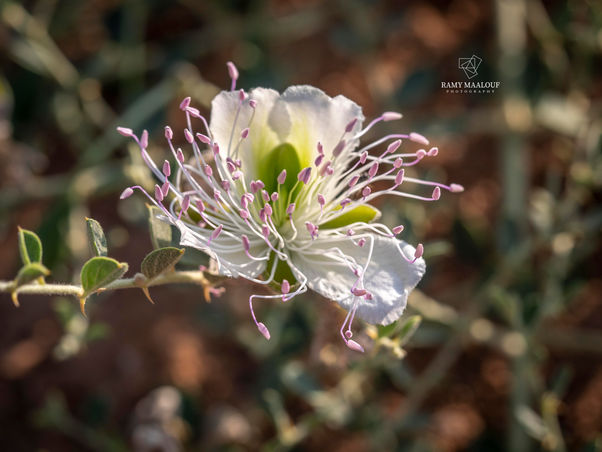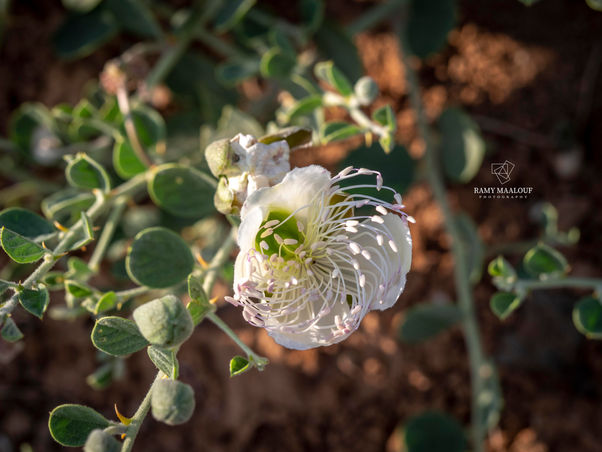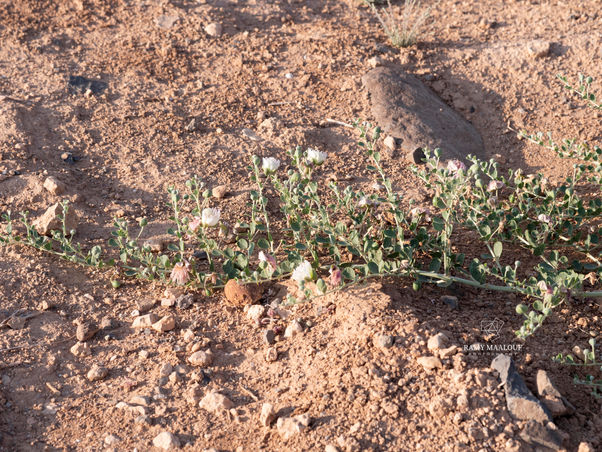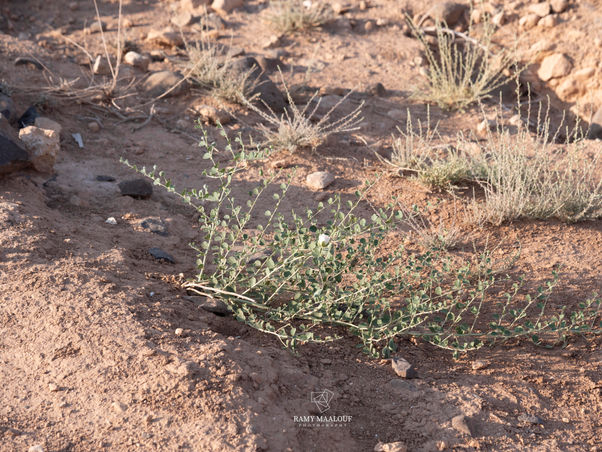Family |
Capparaceae
Capparis spinosa subsp. parviflora
(Boiss.) Ahmadi, H.Saeidi & Mirtadz.
Capparis spinosa subsp. parviflora (Boiss.) Ahmadi, H.Saeidi & Mirtadz.
(Phytotaxa 456: 16, 2020; = Capparis parviflora Boiss.; Capparis spinosa var. parviflora Boiss., Nouvelle Flore du Liban et de la Syrie, vol. 2, p. 631; Pl. XXXI nº 3; 1966)
• Life-form & habit: Small shrub, procumbent or somewhat climbing, 30–80 cm tall, stems often spinescent at nodes.
• Leaves: Smaller than in C. spinosa s.str.; blades 1–2 cm, ovate to suborbicular, sometimes pubescent and remaining so for long, or glabrous (var. glaberrima). Apex rounded to slightly mucronate .
• Inflorescence & flowers: Solitary in leaf axils. Pedicels as long as or longer than the subtending leaves. Flowers 2–3 cm across, markedly smaller than those of C. spinosa s.str.; petals white. Numerous stamens with purple filaments.
• Fruit: Ovoid to oblong, stipitate berry, opening at maturity; seeds black, matte.
• Phenology: Flowers February–August .
• Habitat & elevation: Rocky outcrops, old walls, and dry slopes in Mediterranean habitats.
• Lebanese distribution: Hammara (Metn), Ouadi el-Harir (Anti-Lebanon).
• Syrian distribution: Damascus region (Doummar, Mezzé, Marj-el-Akhdar, city of Damascus), Ma‘aret-en-No‘man, Qatana, Djebel Druze, Banias (incl. var. glaberrima) .
• Native range: Afghanistan, Gulf States, India, Iran, Iraq, Lebanon–Syria, Pakistan, Palestine, Saudi Arabia, Turkmenistan (POWO).
⚠️ Taxonomic note: Boissier described this taxon as Capparis parviflora (Diagn. Pl. Orient. 1: 86, 1844). Mouterde treated it as C. spinosa var. parviflora. Recent taxonomy (Ahmadi et al., 2020) recognizes it at subspecies rank under C. spinosa.





